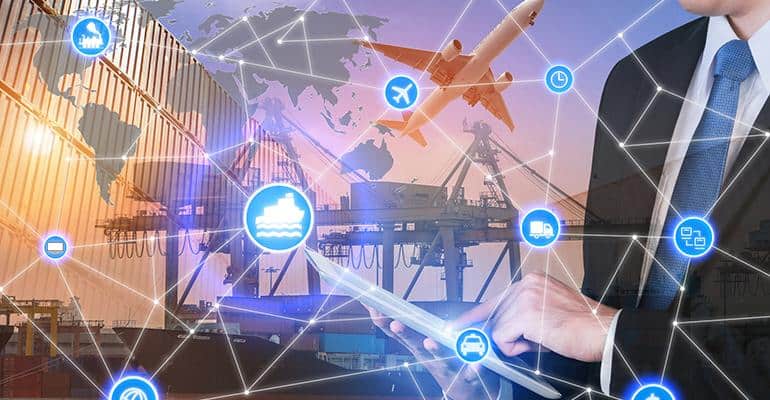Shipper-3PL Relationships Will Share Information Strategically
Part 3 of our 5-part series on Technologies Disrupting the Supply Chain


Since Aqurus Solutions is exhibiting at the Cargo Logistics Canada Expo and Conference in Vancouver, BC on February 7-8, 2018, we thought this would be a good time to take a closer look at the issues being faced by the logistics industry in 2018 and the emerging technologies that will help address them.
As much as we talk about increased efficiencies, reduced staff times, and automated systems as the future of SCM, it’d be easy to believe that supply chain managers daydream about fully automated robots running warehouses, manufacturing products, and driving the trucks that deliver them.
But the reality is that humans will always be needed at all points of the supply chain.
Automation may be the future, but that future still needs a human touch. Here are a couple of examples why.
Phone trees, online live chat, and other customer service automations have done a lot to reduce wait times and frustration for consumers.
But the vast majority of customers still want a human to interact with when they need to resolve a problem. To say nothing of the mistakes automated systems can sometimes make.
Take Progressive Insurance’s automated Twitter response system. When a man tweeted about his frustration with Progressive’s handling of the lawsuit that resulted from an accident in which his sister was killed, he received 16 auto-responses with the exact same condolence message before a human caught on and shut them down.
The man was already disappointed with the insurance carrier, but now all of his Twitter followers could see the cold response he received from what was most likely a bot.
To make matters worse, the man was a well-known comedian, and the story went viral. Auto-responses can be helpful when in the quickly moving world of social media, but only a human
The so-called “Amazon Effect” is no joke. Customer expectations have shifted dramatically in response to the ease of ordering on amazon.com.
Consumers now expect that they can order just about anything they need online, pay a fair price for it, and have it delivered in only a few days—if not hours.
This expectation is now so commonplace that Amazon itself struggles to keep up with it.
After they built a distribution center near Houston, Texas—complete with the famous, orange robot arms that help speed the shipping process and increase accuracy—they found it difficult to keep up with demand.
Their solution? Not more robots, but more people (“In Houston, Amazon’s robots mean more work for humans, not less”, Houston Chronicle, May 31, 2017). .
Robots and automated systems are great when it comes to collecting and storing data, completing repetitive tasks, and lifting heavy objects or getting into spaces that would be too tight for people.
What they aren’t very good at—for the time being, anyway—is creativity, innovation, and flexibility. But human beings are.
Many companies have found that automating some processes frees up time for their employees to tap into their natural talents, come up with creative solutions, and pay attention to fine details that it would be nearly impossible to program a computer to notice.
The BMW plant in Spartansburg, South Carolina, has combined the best of both worlds to create a highly efficient and accurate system that allows for detailed customization and personalization—not to mention continuous improvement.
Robots work on the assembly line to weld and put together more than a thousand X series vehicles each year, but it takes people to put the finishing touches on these highly customizable luxury automobiles.
Along the way, human managers are on the lookout for ways to improve the processes and working conditions.
The search for the right kind of employee is going to get even harder. “Soft skills” such as leadership, communication and flexibility are going to become more crucial than ever.
Salaries will likely go up as the ‘new breed’ of employee will be able to demand top-dollar. This can be off-set by automation.
The bottom line? People will still be our greatest asset for the foreseeable future.
Article #1: Blockchain is Becoming a Crucial Link in the Supply Chain
Article #2: Automation and Digitization Will Shorten the Supply Chain
Article#3: Shipper-3PL Relationships Will Share Information at a Strategic Level
Article #4: Logistics is Experiencing a Talent Revolution
Article #5: 3D Printing will Add Strategic Flexibility to the Supply Chain – but When?

Part 3 of our 5-part series on Technologies Disrupting the Supply Chain
Part 1 of our 5-part series on Technologies Disrupting the Supply Chain

Get Prepared for Disruption to the Supply Chain Industry as these Technologies Mature and Grow